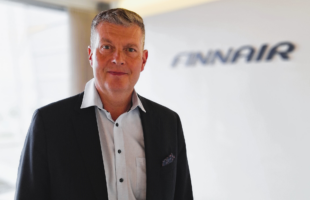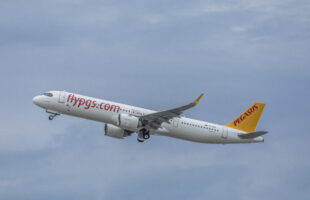Currently cargo is around 17 per cent of Finnair’s revenues and it’s a part of the airline’s strategic plan of increase that figure, although maybe not to the same levels as some Asian carriers enjoy. One of the biggest prompts for this is the nineteen A350-900s set to join the Helsinki-headquartered carrier’s fleet. Four have already arrived and will be followed by seven this year and eight next. Finnair was the European launch customer for this aircraft and plans for them to go on its Asian routes.
The first aircraft of the type it has received to date are servicing Beijing, Shanghai, Hong Kong and Bangkok. When more aircraft arrive they will also be served other Asian destinations. It’s a fascinating study in before and after, Janne Tarvainen, vice president and head of cargo for Finnair, said in a Paylod Asia interview. “Its almost 50 per cent more cargo capacity we will have to utilise in 2020 than compared to, say early 2015” he said adding: “It’s a challenge and an opportunity.”
Cargo reorientation
All of this additional cargo capacity is a result of passenger fleet growth – the A350-900 for instance provides up to 95m3 and 23 tonnes of cargo capacity depending of course on the flight leg and the number of passengers – and it couldn’t be allowed to go to waste especially as the board had strategised to be a modern cargo carrier at the end of 2014 which led to it selling off its ageing MD-11 freighter fleet.
The new Finnair cargo carrier is very definitely bellyhold, and with the fleet renewal, its substantial bellyhold. A number of things have flowed from this. One is an almost attitudinal change within the company. Prior to this point, cargo was according to Tarvainen, “a separate silo” along with a few other divisions. Now it is much more integrated and defi nitely in the company’s mainstream he added. The other thing, a bigger one, is a much more go-getting attitude within the cargo division as it deals with the challenge of filling the added capacity of the new widebody fleet.
“Our goal is really to maximize revenues in a structured manner in order to contribute as positively to Finnair as we can. The structured manner means ambitious targets for the strategic focus markets and emphasis on providing value adding high quality solutions to our customers,” Tarvainen said.
Structured is an important word here meaning not just how things will be done but why they will be done in a certain way. Finnair will definitely not take reduced rates to the market to win business. A small carrier in relation to others it knows it is not in a position to set rates and that its share and benefits to it as a company will come from offering better services.
“We are focusing to getting loads in a structured manner. The structured way of working is essential. It is easy to get the loads just by pushing the price down, but then you do not generate the value to your company and maybe not even to your customers if you do not understand what they really need and appreciate,” Tarvainen said. How it will do this is twofold. Firstly it will work, really work, its core markets and it will then work just as hard at upgrading its own infrastructure and how that is run and managed.









